nForce4 SLI Motherboards: Premium Performance at a Bargain Price
by Gary Key on January 3, 2006 12:05 AM EST- Posted in
- Motherboards
Albatron K8SLI: Features
The nForce4 USB connectors, BIOS, and System Panel connector are located along the front edge of the board. The CMOS reset is a traditional jumper design located next to the battery.
In between the two x16 PCI Express slots is a PCI Express x1 slot. This configuration could potentially render this slot useless when utilizing the first x16 PCI Express slot. We did not have any issues utilizing this slot with video cards containing single slot cooling systems, but we were unable to install a network card upon installation of a NVIDIA 7800GTX 512mb in the x16 PCI Express slot. The first PCI slot next to the second PCI-E x16 slot will be rendered useless when utilizing a two-slot video card cooling solution.
The CK8-04 chipset is actively cooled and located between the CPU socket and the first PCI-E x16 slot.
Albatron places the four-pin 12V auxiliary power connector at the top of the CPU socket, which creates a potential cable management issue or airflow issue if your cable is short.
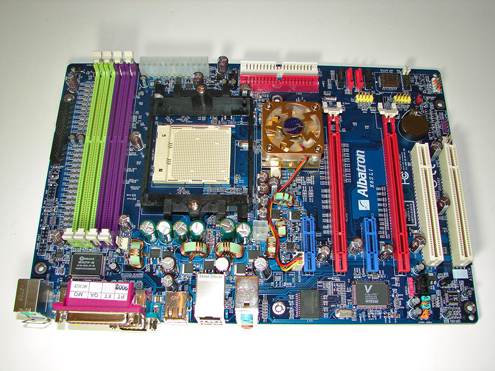
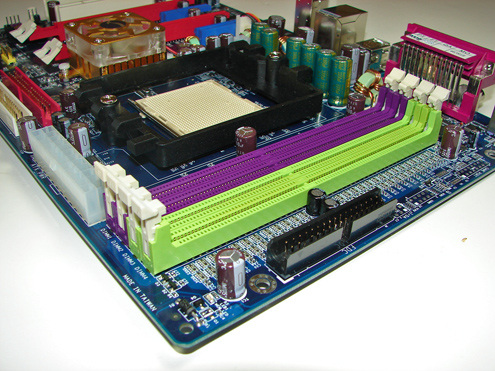
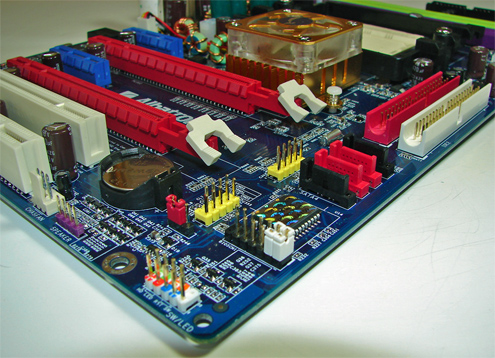
The nForce4 USB connectors, BIOS, and System Panel connector are located along the front edge of the board. The CMOS reset is a traditional jumper design located next to the battery.
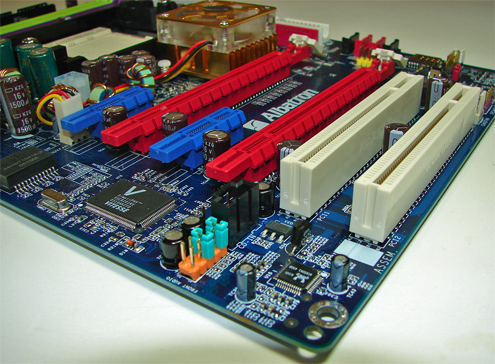
In between the two x16 PCI Express slots is a PCI Express x1 slot. This configuration could potentially render this slot useless when utilizing the first x16 PCI Express slot. We did not have any issues utilizing this slot with video cards containing single slot cooling systems, but we were unable to install a network card upon installation of a NVIDIA 7800GTX 512mb in the x16 PCI Express slot. The first PCI slot next to the second PCI-E x16 slot will be rendered useless when utilizing a two-slot video card cooling solution.
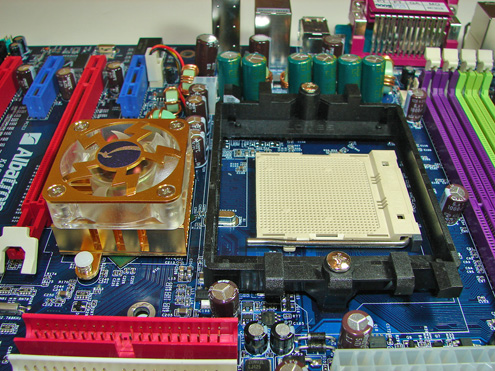
The CK8-04 chipset is actively cooled and located between the CPU socket and the first PCI-E x16 slot.
Albatron places the four-pin 12V auxiliary power connector at the top of the CPU socket, which creates a potential cable management issue or airflow issue if your cable is short.
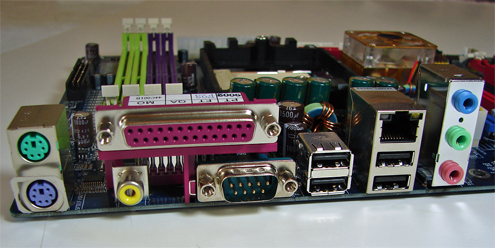










37 Comments
View All Comments
Gary Key - Wednesday, January 4, 2006 - link
As stated in the article the current pricing structure lends itself to the purchase of an SLI capable motherboard if the nForce4 is your chipset of choice. Even if you do not utilize SLI you at least have the option of doing so, if not for gaming, then for multiple monitor support and excellent performance utilizing two x8 lanes. If you look at the current support from the motherboard suppliers and product plans it is very obvious that SLI/CrossFire capable motherboards are becoming the standard across all price points. Our statements were based on these facts regarding the motherboard choices available. If you consider the potential cost/performance benefits then why pay the same amount of money for a board that is not capable of SLI or CrossFire and will probably not receive the same level of support over the lifespan of the product.
bob661 - Wednesday, January 4, 2006 - link
Isn't this a contradiction?
Capt Caveman - Tuesday, January 3, 2006 - link
What are you talking about? You can get a SLI board for $70.andlcool - Tuesday, January 3, 2006 - link
for the asus one, it should be ddr and not ddr2.ElFenix - Tuesday, January 3, 2006 - link
still, should be a good price for stock speed boardsElFenix - Tuesday, January 3, 2006 - link
looking at the first chart i mean. doesn't seem to fall off much eh?<--- wants an edit function
Gary Key - Tuesday, January 3, 2006 - link
The Foxconn board offered excellent stability throughout testing although it certainly is not targeted at the overclocking crowd. The performance was certainly acceptable and without the benchmarks you probably would not be able to tell the difference between it and the other boards. The layout is really nice unless you plan on utilizing two video cards with two slot cooling solutions as the space becomes very tight between the two x16 slots.I would like an edit function also. ;->